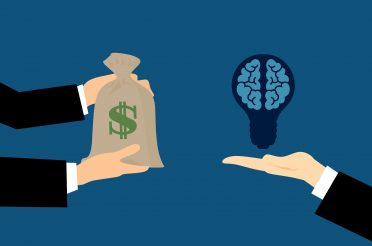PAYCHECK PROTECTION PROGRAM – LOAN FORGIVENESS
In light of the on-going second round of PPP funds allocated by the government on April 24, 2020, and the continuously evolving SBA guidelines interpreting the various aspects of the CARES Act, this memo highlights some of the key features about the “Loan Forgiveness” piece of the Paycheck Protection Program (“PPP”) provided under Section 1106 of the CARES Act.
1. Loan Forgiveness Period
The loan forgiveness period begins on the date the lender (the “Date of the Loan”) makes the first disbursement of the loan for a period of eight (8) weeks thereafter (the “Loan Forgiveness Period”).[1]
2. Forgiveness Amount
The forgiveness amount (the “Forgiveness Amount”) equals the sum of the following permitted expenses incurred and payments made by the loan recipient during the Loan Forgiveness Period:
- Payroll Costs (Salaries and Wages but no 1099 payments);
- Rent under a lease in force before February 15, 2020;
- Utility payments (including gas, electricity, water, transportation, telephone, or internet access) for which the service began before February 15, 2020; and
- Mortgage interest (on real or personal property) incurred in the ordinary course of the business before February 15, 2020.[2]
Is the accrued interest also forgivable? The SBA Initial Interim Final Rule indicated that interest accrued on a PPP loan may also be subject to forgiveness. However, there is no clarity on this aspect as of yet. The interest begins to accrue on the Date of the Loan.
3. Limitations and Adjustments to the Forgiveness Amount
It is important to note that the entire loan amount, if used for the forgivable purposes (mentioned above) during the 8-week period, can be forgiven. The Forgiveness Amount, however, will be reduced and adjusted in the following circumstances:
- Not more than 25 percent of the loan forgiveness amount can be attributable to Nonpayroll Legitimate Expenses (i.e., mortgage interest, rent and utilities). Any expenditure on non-payroll costs in excess of 25% will be reduced from the Forgiveness Amount.[3]
- Proceeds from any advance up to $10,000 on anEconomic Injury Disaster Loan (“EIDL”) will be deducted from the Forgiveness Amount.[4]
- Proceeds from the loan used after the Loan Forgiveness Period, even if for Payroll Costs and/or Nonpayroll Legitimate Expenses, will not be forgiven.
- Proceeds from the loan to pay Payroll Costs above $100,000 to any one individual will not be forgiven.
- The Forgiveness Amount will be further reduced if the loan recipient decreases the number of full-time equivalent (“FTE”) employees and/or reduces the total salary or wages of certain employees employed during the eight-week, as per the following formulas prescribed under the CARES Act:
(i) Reduction in the number of FTE employees
If the loan recipient decreases the number of its FTE employees, the loan Forgiveness amount will be reduced by multiplying that amount by the quotient obtained by dividing:
A. Numerator: Average number of FTE employees per month employed by the loan recipient during the 8-week period, by
B. Denominator: Average number of FTE employees per month employed by the loan recipient either from:
-
- February 15, 2019 through June 30, 2019, or
- January 1, 2020 through February 29, 2020.
(ii) Reduction in wages/salaries
The Forgiveness Amount will be further reduced by the amount of any reduction in the total salary or wages of a “Covered Employee” (defined below) during the 8-week period which, as annualized, exceeds 25% of the employee’s salary or wages during the most recent full quarter during which the employee was employed, as annualized.
A Covered Employee for the purposes of reduction in salary and wages is the employee who did not receive, during any single pay period during 2019, wages or salary at an annualized rate of pay in an amount more than $100,000.
4. Exemption for Re-Hires
The CARES Act provides an exemption from the penalty on the loan Forgiveness amount under the circumstances described above. For employee and/or salary cuts that occurred during February 15, 2020 and April 26, 2020, the loan Forgiveness Amount will not be reduced if the reductions in the employee head-count and salaries are reversed on or before June 30, 2020.
5. Procedure to Receive Loan Forgiveness
Following documents are required to be submitted to the lender in order to claim loan forgiveness:
- documentation verifying the number of full-time equivalent employees on payroll and pay rates for the periods used in calculating adjustments to the Forgiveness Amount (mentioned above). This includes payroll tax filings reported to the Internal Revenue Service; and State income, payroll, and unemployment insurance filings;
- documentation, including cancelled checks, payment receipts, transcripts of accounts, or other documents verifying payments on covered mortgage obligations, payments on covered lease obligations, and covered utility payments;
- a certification from a representative of the eligible recipient authorized to make such certifications that –
(i) the documentation presented is true and correct; and
(ii) the amount for which forgiveness is requested was used to retain employees, make interest payments on a covered mortgage obligation, make payments on a covered rent obligation, or make covered utility payments; and
- any other documentation the SBA Administrator determines necessary.
6. Timeline for Decision on Loan Forgiveness Application
CARES Act requires lenders to issue a decision on the Loan Forgiveness application no later than 60 days after the date on which a lender receives such a request.
7. Treatment of Non-Forgiven Loan Amount
Any PPP loan amount that is not forgiven will be deemed a payable loan with a two-year maturity and interest rate of 1%. Borrower will not have to make any payments for six months following the date of disbursement of the loan. However, interest will continue to accrue on PPP loans during this six-month deferment.[5] The loan can be paid off at any time without any pre-payment charges.
If you have any questions about this Memo, please email Christopher L. Rasmussen, Managing Partner Commercial, Trademark and Privacy at chris@inventuslaw.com or Anil Advani, Managing Partner at anil@inventuslaw.com.
Disclaimer:
This Memo is being provided for information purposes only and is drafted entirely on the bases of public resources. Information contained on or made available herein is not intended to and does not constitute legal advice, recommendations, mediation or counseling under any circumstance. This information and your use thereof do not create an attorney-client relationship. You should not act or rely on any information provided herein without seeking the advice of a competent attorney licensed to practice in your jurisdiction for your particular business. The rules and regulations are still being interpreted and may affect the requirements and qualifications for the Loan Forgiveness under the Paycheck Protection Program described herein.
[1] Question 20 of SBA PPP FAQs published on April 29, 2020.
[2] The last three bullets shall be referred to as the “Nonpayroll Legitimate Expenses.”
[3] As per the SBA Interim Final Rules published on April 3, 2020.
[4] As per the SBA Interim Final Rules published on April 3, 2020.
[5] As per SBA Interim Final Rule published on April 3, 2020.





